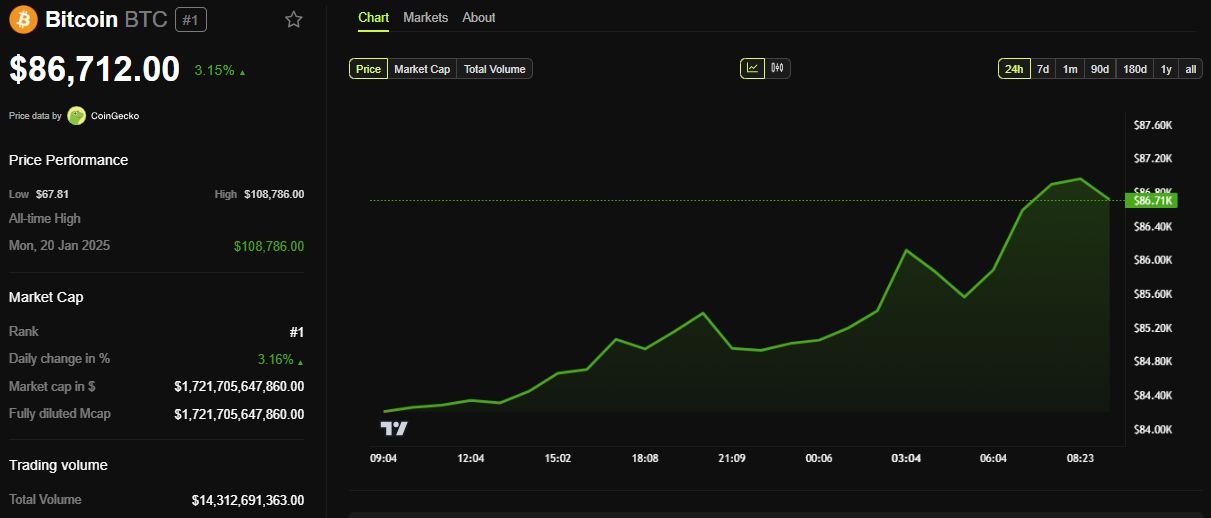This week in the cryptocurrency market, several US economic data releases will impact Bitcoin (BTC) and the overall cryptocurrency market sentiment.
Meanwhile, Bitcoin price continues to hover near $87,000, defending against further decline. There is a lack of sufficient catalysts to activate upward potential.
US Economic Data, Cryptocurrency Impact
This week, five US economic data points are attracting the attention of cryptocurrency traders and investors: service and manufacturing PMI, consumer confidence index, new unemployment claims, GDP, and PCE index. Let's examine how these data might influence sentiment.

Service and Manufacturing PMI
The S&P Global US service and manufacturing PMI data to be released on Monday, March 24, will assess the health of these critical sectors. Recent trends show manufacturing at 52.7, showing strength, while services are at 51.0.
Strong manufacturing and service PMI figures can boost investment sentiment towards risk assets, potentially driving Bitcoin upward. Conversely, figures below 50 indicate economic contraction, potentially stimulating recession concerns and triggering fund movement from cryptocurrencies to safe assets.
With Trump's pro-growth policies in focus, positive surprises could amplify upward sentiment, while continued weakness might dampen enthusiasm.
"It's a busy week as Q1 2025 comes to an end. How will the market wrap up the first quarter of Trump's new term?" – Analyst Mark Cullen from AlphaBTC asked.
Consumer Confidence
The Conference Board's consumer confidence index, to be released Tuesday at 10 AM (ET), will reflect consumption attitudes amid economic uncertainty. Despite robust job growth, the February decline to 98.3 suggests unease, marking the steepest drop since 2021.
A rebound to the midpoint forecast of 95.0 could reduce retail optimism, potentially becoming a crucial driver for the retail-centric Bitcoin market and driving prices up.
However, further confidence decline could increase expectations of a dovish Fed, potentially providing mixed results. Liquidity expectations might support BTC prices, but risk-averse movements could dominate.
New Unemployment Claims
Thursday's new unemployment claims report will track labor market strength, showing the number of US citizens applying for unemployment insurance.
The previous two-week tally of 223,000 claims was slightly below the expected 224,000, suggesting economic cooling and becoming a point of policy consideration for the Fed. The preceding week's claims were also 220,000, below the 225,000 expectation.
This week's new unemployment claims are expected to be around 226,000, slightly increasing from previous weeks.
High claim numbers might stimulate recession concerns, leading investors to choose Bitcoin as a hedge against instability. Conversely, low claims could strengthen traditional markets and draw capital away from cryptocurrencies. With the Trump administration monitoring labor increases, this data could dramatically shift sentiment.
GDP
Thursday will see the release of the Q4 2024 GDP second revision, expected at 2.3%. Strong growth could reduce Bitcoin's appeal as a risk asset if investors prefer stocks, especially if the 2024 revised figure shows an annual 3% increase.
Weak figures might fuel speculation about rate cuts, potentially enhancing BTC's value storage attraction. Cryptocurrency traders are watching for alignment with recent Bureau of Economic Analysis updates and strong consumer spending signals.
Meanwhile, Bitcoin OG and economist George Selgin challenges claims about strategic Bitcoin reserves increasing GDP. The financial expert argues that Bitcoin's price does not directly or significantly impact a nation's economic production.
"...but its [Bitcoin] price does not have a clear and substantial effect on GDP, so the government holding Bitcoin will not increase GDP," he explained.
This stance stems from Trump's March 2025 executive order creating strategic Bitcoin reserves using confiscated assets. Selgin and others criticize this as misuse of public funds.
PCE Index
Meanwhile, the Fed's preferred inflation indicator, the Personal Consumption Expenditures (PCE) index, will be released Friday. The February index is expected to follow January's year-on-year 2.5% increase.
Higher-than-expected core PCE (excluding food and energy) could delay rate cuts and potentially apply downward pressure on Bitcoin as tightening policies approach. Soft figures might trigger a rally, reinforcing hopes for monetary easing. With inflation's persistence remaining, this announcement could determine Bitcoin's short-term path.
The cryptocurrency market remains tense, and these events are prepared to shape Bitcoin's trajectory within the evolving US economic narrative.

According to BeInCrypto data, Bitcoin is trading at $86,712, rising by more than 3% in the past 24 hours.





